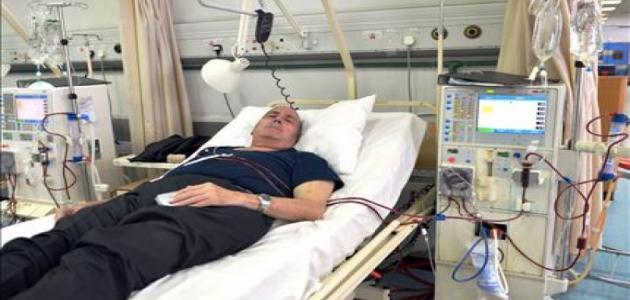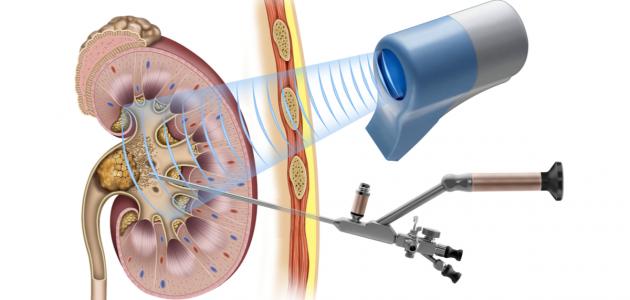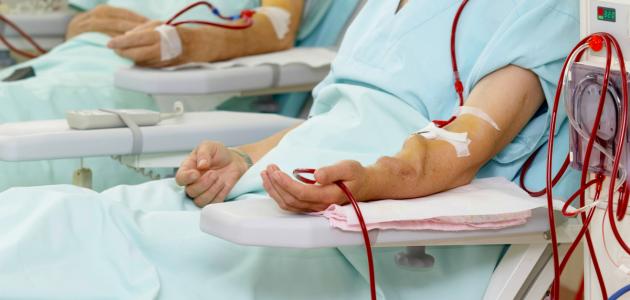Dialysis
Dialysis is known as a therapeutic medical procedure that is usually performed to get rid of body wastes and excess fluids from the blood when the kidneys lose the ability to perform their functions properly. In this context, it is worth explaining the multiple functions that they perform. Healthy kidneys, as they purify the blood by getting rid of waste, water, and excess minerals. The kidneys also produce some hormones that maintain healthy blood and bone strength, including the hormone erythropoietin, which is responsible for stimulating the bone marrow to produce cells. New red blood, but according to the National Kidney Foundation, if the kidneys lose the ability to perform their functions by 85-90% and the glomerular filtration rate is less than 15, as in cases of kidney failure, Harmful substances may accumulate in the body as a result, blood pressure may rise, and the production of red blood cells may also be affected, and then the affected person needs to undergo a kidney transplant or undergo dialysis to preserve his life.
Reasons for dialysis
Doctors recommend dialysis as a medical alternative to perform the kidney’s function of cleaning the body of toxins and excess water that occurs in the event of damage or damage to the kidneys. It is noteworthy that kidney problems that require the need for dialysis may be chronic, meaning long-term, or acute, meaning they occur within a short period. The doctor may also recommend dialysis in some other medical conditions, such as: high levels of potassium in the body.
Read also:Causes of frequent urination in men
Types of dialysis
In fact, there are two types of dialysis: hemodialysis and peritoneal dialysis, each of which has pros and cons. Choosing the most appropriate type for the person concerned depends on a group of factors, including: the age of the patient and the medical problems that he suffers from. He suffers from it, how easy it is to perform dialysis, and the type of dialysis available in the place where dialysis is performed.
Hemodialysis
Hemodialysis is the most common procedure used to treat kidney failure. It is a technique used to get rid of waste, salts, and excess fluids in the blood when the kidneys lose their ability to function completely. Where the blood is pumped into a special device to purify it from the previously mentioned substances and then returned to the body after purification is complete, which helps control blood pressure and maintain a balance in the levels of some important minerals in the blood such as potassium, sodium, and calcium. It is worth noting that this method does not It is a final treatment for kidney failure, but it helps improve the patient's quality of life. He feels better and lives longer.
Preparation before performing hemodialysis
Preparation for the hemodialysis procedure takes place a period of time before the first dialysis session is performed, and this period ranges from several weeks to several months, as the surgeon creates an arterial and venous connection that facilitates access to the blood vessels and allows the required amount of blood to leave the body, and then returns to it to ensure completion. Performing hemodialysis. It is noteworthy that this procedure requires a period of time to recover before starting dialysis. It is important to pay attention to the need to pay attention to the connection site to prevent infection or inflammation. As for direct preparation for dialysis, it is necessary to measure the patient’s temperature, blood pressure, and heart rate. , in addition to his weight, immediately before he was admitted for dialysis.
Read also:Tips so that incontinence does not ruin your moments
Mechanism of action of hemodialysis
Two needles are attached to the hand of the patient who will undergo hemodialysis. Each of these two needles is connected to a tube connected to a blood purification device known as an artificial kidney or dialyzer, which is a filter in the form of a hollow plastic tube through which blood flows. Through it to be purified, the blood is then returned to the body again. This filter contains two parts separated by a semi-permeable membrane. Blood flows through the first part of the filter, while a liquid used in the filtration process, known as dialysate fluid or dialysis powder, flows in the opposite part. This liquid contains water and a group of electrolyte materials that are used to balance the level of electrolyte materials. present in the blood. Upon completion of the dialysis process, this substance is disposed of along with the waste and materials resulting from blood purification. In this context, it is worth mentioning that the semi-permeable membrane allows the dialysis fluid and waste resulting from filtration to pass through it, while blood cells are unable to cross this. The membrane, and the balance of electrolyte substances is adjusted based on the proportion of these substances in the blood. It is worth noting that the patient may suffer from some health problems during the dialysis process, such as low blood pressure or muscle spasm. During the filtration procedure, the dialysis device measures blood pressure and controls the speed of waste removal. And excess salts and fluids from the body, as well as the speed of blood flow through the filter.
Read also:How is the dialysis process done?
Benefits of hemodialysis
In fact, the benefits gained depend on the underlying reason for undergoing this type of dialysis. If the cause is acute kidney failure, the treatment is temporary and the kidneys usually regain the ability to perform their functions after a short period of time. However, if dialysis is resorted to as a solution to the problems of chronic kidney failure; The treatment is for life as long as the option of kidney transplantation is not resorted to. It is worth noting that hemodialysis may usually be performed three times a week in centers specializing in dialysis, and it can be applied at home. Finally, it is worth noting that the specialist performs a set of tests periodically to check on your health. The health of the injured person and knowing whether he is receiving the appropriate treatment and in the appropriate amount.
Patient instructions
There are many tips and guidelines that should be followed between treatment sessions to obtain the best results, such as paying attention to diet in coordination with the specialist. The amounts consumed in fluids and some foods that contain proteins, sodium, potassium, or phosphorus must be monitored, taking into account the nature of other health problems that the patient suffers from, his desire to eat certain types of foods, and the extent of the kidneys’ work efficiency. The injured person must take prescribed medications regularly, and seek help from the medical care team if needed.
Peritoneal dialysis
Peritoneal dialysis, or peritoneal dialysis, is defined as one of the procedures used in cases of kidney failure. The infected person’s blood is purified and waste such as creatinine and urea are removed through the peritoneal cavity inside the infected person’s body, specifically in the membrane that lines the abdomen, known as the peritoneum. ) (in English: Peritoneum), which works as a filter to purify and filtrate the blood; The dialysate fluid is pumped into this membrane and exits after completing the peritoneal dialysis process.
Preparation before performing peritoneal dialysis
Preparation for peritoneal dialysis is performed by performing a surgical operation under local or general anesthesia to install a catheter near the navel area, where the dialysate fluid is pumped into the abdomen through this catheter and exits it. It should be noted that after installing the catheter it is recommended to wait for a period of up to About a month before starting the dialysis procedure, to give the catheter placement site enough time to heal.
Mechanism of peritoneal dialysis
When performing peritoneal dialysis, dialysate fluid is injected through a catheter that is installed in the peritoneal cavity, and this fluid remains in the abdomen for a certain period of time. During this, the peritoneal membrane allows excess fluids and wastes to pass from the blood into the dialysate fluid. When that period of time expires, the dialysate fluid is disposed of in a designated, sterile container. This is followed by repeating these steps again. It should be noted that this process can be performed manually in four steps. To five times a day, each time it takes a period of time ranging between thirty to forty minutes. In fact, peritoneal dialysis can be performed automatically while the patient is asleep using a special device, as the catheter is connected to this device, so it may take Dialysis in this case takes less time, and it should be noted that there are two types of peritoneal dialysis: One of them is chosen depending on the condition of the patient, and these types are: continuous ambulatory peritoneal dialysis, and continuous cycler peritoneal dialysis.
Benefits of peritoneal dialysis
In fact, peritoneal dialysis can be used at home, in the workplace, or even when traveling. Here it is worth noting that although hemodialysis is considered a successful option to reduce possible complications resulting from kidney failure; However, peritoneal dialysis is characterized by a number of advantages, including the following:
- Flexibility; Peritoneal dialysis can be used in most cases, as we mentioned above, and this makes the life of the person concerned more flexible and of a higher quality. However, it should be noted that peritoneal dialysis cannot be used in all cases of dialysis, as the choice between it and hemodialysis is made based on the kidney functions. The general health of the injured person, the wishes of the person concerned, and the nature of his life.
- Do not restrict the patient’s diet to a large extent, as is the case when using hemodialysis, because peritoneal dialysis is performed more specializedly and in a way that prevents the accumulation of large amounts of minerals in the body. This does not mean that the person who undergoes peritoneal dialysis does not need to regulate his diet; It is needed, but to a lesser extent when compared to hemodialysis.
- Preserving the remaining ability of the college to perform its functions for a longer period.
Patient instructions
It is worth following some tips and instructions when performing peritoneal dialysis to obtain the best results and improve the patient’s general health through the following:
- Follow a good diet that is low in sodium and phosphorus.
- Commitment to using the medications prescribed by the doctor, as a person may need to use several medications to control blood pressure, stimulate the production of red blood cells, control the levels of some substances in the blood, and prevent the accumulation of phosphorus in the blood.
- Keep the catheter site clean and dry, and check it daily to notice any symptoms that may indicate infection, in addition to washing hands before touching the catheter.
- Ensure the safety of the catheter placement; By not using any sharp tools near it, covering it to avoid clashing with clothing, and not using unapproved clips in the catheter location.
- Store the tools used in peritoneal dialysis in a moist and dry place.
Possible side effects of dialysis
People undergoing dialysis may suffer from a number of side effects, including the following:
- Muscle spasm.
- Itching; Which may get worse before or after washing.
- Reduction of Blood pressure; Especially in diabetes.
- Suffering from sleep disturbances due to itching, restless legs, and sleep apnea.
- Fluid accumulation; This can be avoided by drinking specific amounts of fluids.
- Infection or swelling at the site of the washing procedure.
- Depression and mood swings.









